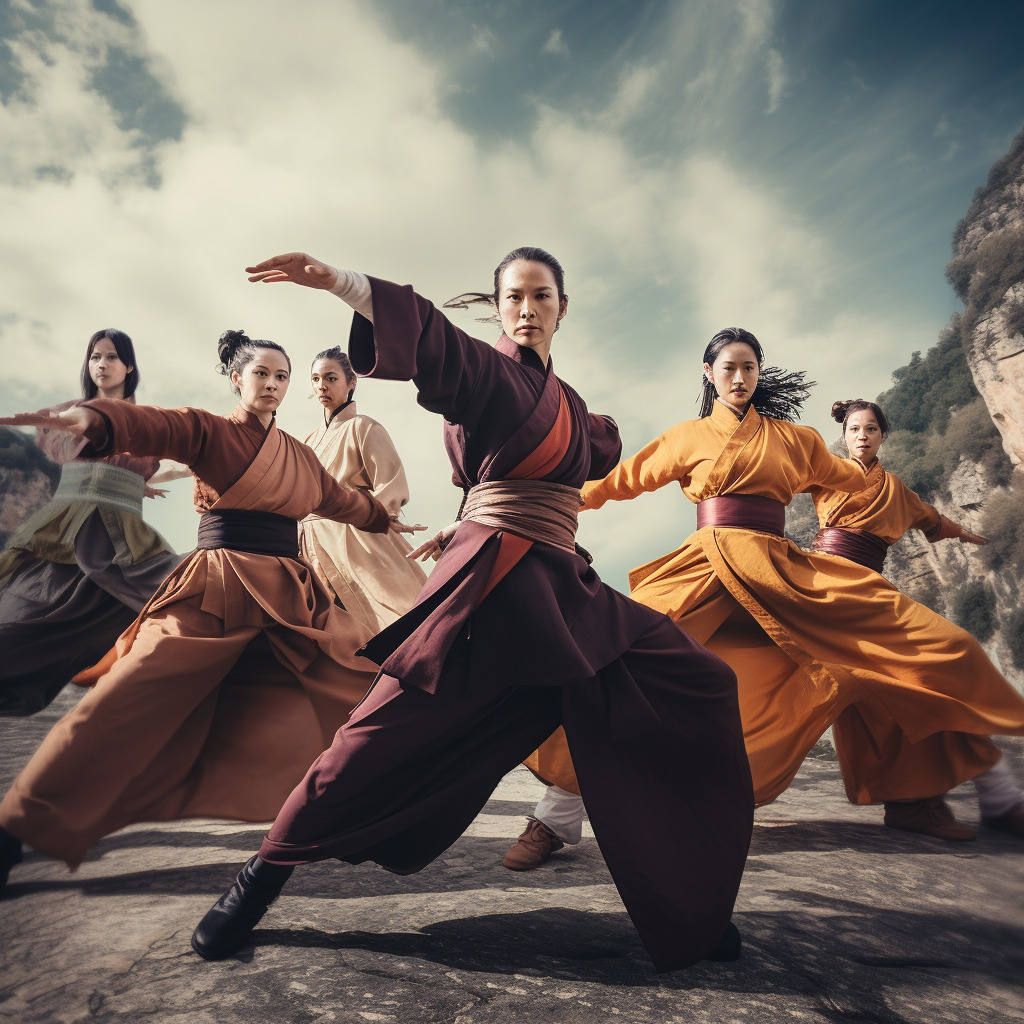Kung Fu ist mittlerweile weltweit verbreitet und Interessierte können zwischen einem breiten Angebot an Schulen und Fortbildungen wählen. Damit ihr die wichtigsten Fragen vorab klären könnt, stellen wir hier Tipps zum Training und zum Graduierungssystem vor, also den Farben der Gürtel bzw. Schärpen und welchen Fortschritt sie bedeuten.
In 30 Sekunden das Wichtigste
- Beim Kung Fu wird ein Anzug sowie eine farbige Schärpe getragen (die den Schulungsgrad angibt).
- Bei den Prüfungen für die nächsthöhere Schärpe werden Techniken, Theorie und Waffenkunde sowie Kampfelemente bewertet.
- Weiteres Zubehör beim Kung Fu sind Nahkampfwaffen, wie Rattan-Stöcke oder Nunchucks.
Ausrüstung für Kung Fu Training
Während des Trainings tragt ihr normalerweise einen komfortablen Anzug. Er sollte die Arme und Beine komplett bedecken. Meist ist der Anzug in Schwarz oder Weiß gehalten, es gibt aber auch rote oder orangefarbene Anzüge. Der Anzug wird beim Kung Fu ohne Gurt geschlossen – im Gegensatz zu anderen Kampfsportarten. Deshalb verfügt er meist über Schließen. Zudem ist er mit komplexen Stickereien dekoriert. Die Uniform wird durch leichte, flexible Schuhe aus Baumwolle oder Segeltuch vervollständigt. Sie schützen eure Füße während des Wettkampfes und beim Training. Die Shaolin-Mönche haben zusätzlich noch weiße Socken an, die sie mit Beinbändern umwickeln.
Je nach Trainingsziel und Ausrichtung können auch Waffen im Kung Fu eingesetzt werden. Das chinesische Schwert dürfte dabei am populärsten sein. Es ist mit zwei scharfen Schneiden versehen und hart, aber dennoch flexibel. Das sorgt dafür, dass es während eines Kampfes nicht brechen kann. Das Schwert dient gleichzeitig als Stich- und als Hiebwaffe. Eine weitere typische Waffe für Kung Fu ist der Dreistock. Er besteht aus drei miteinander verbundenen Holzgliedern und eignet sich insbesondere für schnelle Drehungen. Allerdings ist die Verletzungsgefahr sehr hoch und der Dreistock gilt als Waffe mit einem hohen Risikofaktor, weshalb er in Deutschland nicht erlaubt ist. Zudem findet im Kung Fu der Langstock Verwendung. Dies ist ein Holzstock, der früher japanischen Bauern als unauffällige Waffe diente, um sich auf Reisen zu verteidigen. Genau wie beim Dreistock wirkt der Langstock vor allem bei schnellen Bewegungen, weil sich starke Fliehkräfte entwickeln.
Kung Fu Gürtelfarben
In den traditionellen Kung Fu Stilen und Schulen gibt es kein einheitliches Graduierungssystem. Dennoch führen immer mehr Kung Fu Schulen Graduierungssysteme für Schüler nach dem folgenden Muster ein:

| Schülergrade | Gürtelfarbe |
| 1. Schülergrad | Weiße Schärpe |
| 2. Schülergrad | Gelbe Schärpe |
| 3. Schülergrad | Orangene Schärpe |
| 4. Schülergrad | Grüne Schärpe |
| 5. Schülergrad | Violette Schärpe |
| 6. Schülergrad | Blaue Schärpe |
| 7. Schülergrad | Braune Schärpe |
| 8. Schülergrad | Rote Schärpe |
| 9. Schülergrad | Schwarze Schärpe |
Darüber hinaus gibt es oftmals noch die Meistergrade, die in fünf Schritten aufgebaut sind. Sie sind je nach Graduierung an andere Voraussetzungen gebunden:
| Meistergrade | Zeitliche Regel |
| 1. Meistergrad | muss nach spätestens 12 Monaten nach der Prüfung für die schwarze Schärpe bestanden werden |
| 2. Meistergrad | Kann nach weiteren 24 Monaten erreicht werden |
| 3. Meistergrad | Kann nach weiteren 36 Monaten erreicht werden |
| 4. Meistergrad | Kann nach weiteren 48 Monaten erreicht werden |
| 5. Meistergrad | Kann nach weiteren 60 Monaten erreicht werden |
Jede weitere Graduierung wird nur verliehen, wenn das Anstreben die Kunst weiterzugeben ausreichend groß ist. Für das Erreichen der Schüler und Meistergrade kann es je nach Stil und Schule andere interne Voraussetzungen geben.
Kung Fu Training & Techniken
Für die Praxis von Kung Fu sind ein stabiler Stand und Schrittfolgen sehr wichtig. Oft werden mehrere Abfolgen gelehrt, die sowohl als Angriff als auch zur Verteidigung ausgeübt werden können.
- Sehr populär ist zum Beispiel die Pose namens „der Kranich“. Sie wird auch im Karate ausgeführt und stellt die Basis für Tritte und Sprünge dar.
- Zusätzlich zu den Grundhaltungen ist es wichtig, dass die philosophischen Konzepte verinnerlicht werden. Meditation steht im Kung Fu daher ebenso im Fokus wie die langsamen und konstanten Steigerungen in der Praxis. Sie sollten nicht unkontrolliert oder abrupt geschehen.
- Auch Demut ist während des Trainings eine wichtige Grundhaltung des Kämpfers. Im Idealfall sollte die Kung Fu Praxis schon im Kindesalter beginnen und ein Leben lang demütig und unterbrechungslos fortgeführt werden.
- Des Weiteren spielen im traditionellen Kung Fu der Lebenswandel und alltägliche Gewohnheiten eine sehr wichtige Rolle. Die Schüler sollten sich genau wie beim Yoga vegetarisch ernähren und auf Exzesse und Alkohol verzichten. Zudem müssen alle Traditionen und Abläufe, die während des Trainings erlernt werden, unverändert bleiben und von sämtlichen Schülern geachtet werden.
Im folgenden Video könnt ihr euch ein „Kung Fu Bootcamp“ ansehen und so einen Einblick den Trainingsalltag von Nachwuchsmönchen erhalten:
- Boxsack Basics: Findet den perfekten Boxsack für euer Heimtraining - 23. November 2023
- Mobbing am Arbeitsplatz: Tipps & Hilfestellungen für Betroffene - 15. November 2023
- Wohnung & Haus effektiv vor Einbruch schützen: 10 Tipps & FAQ - 3. November 2023
Update: 2025-07-01 / Affiliate Links / Bilder von der Amazon Product Advertising API

